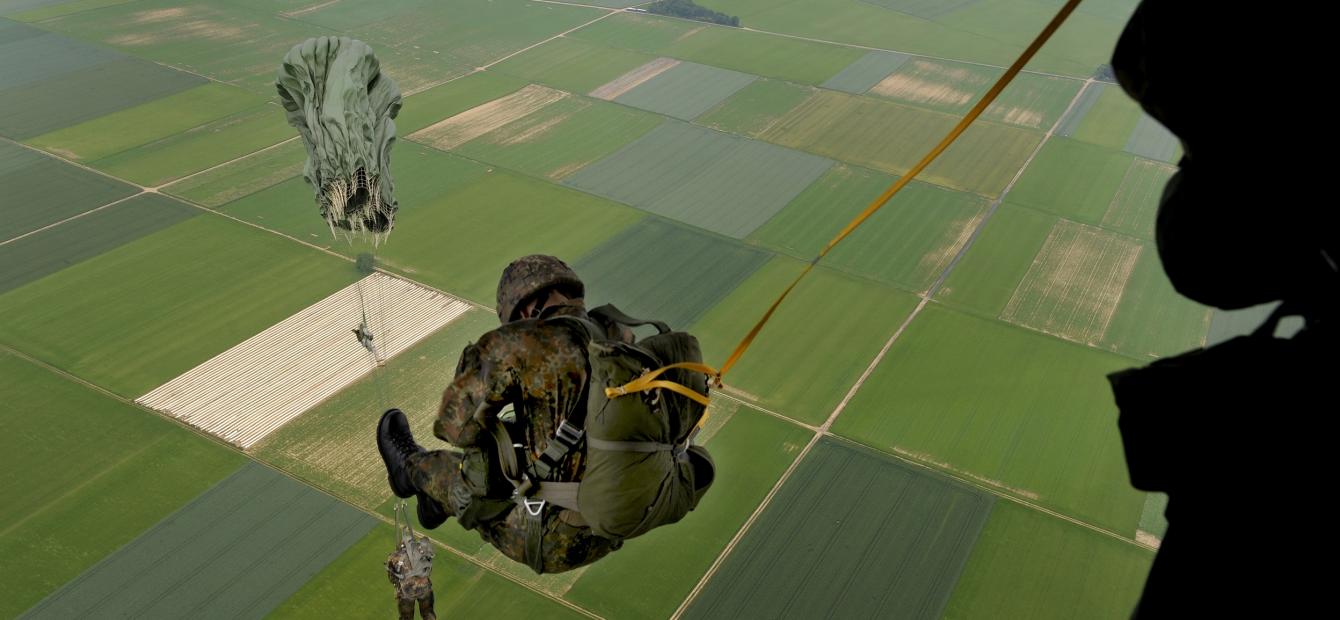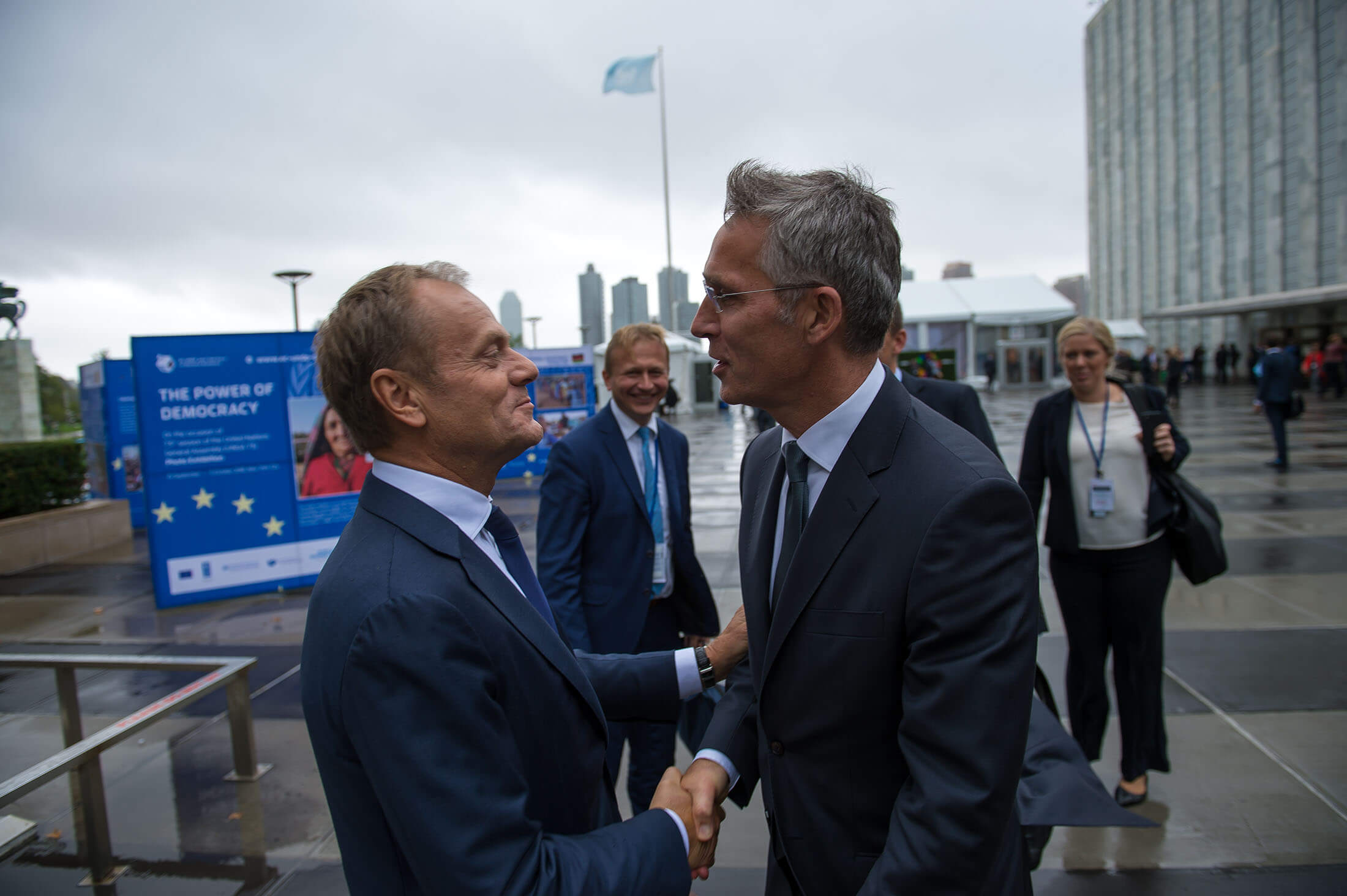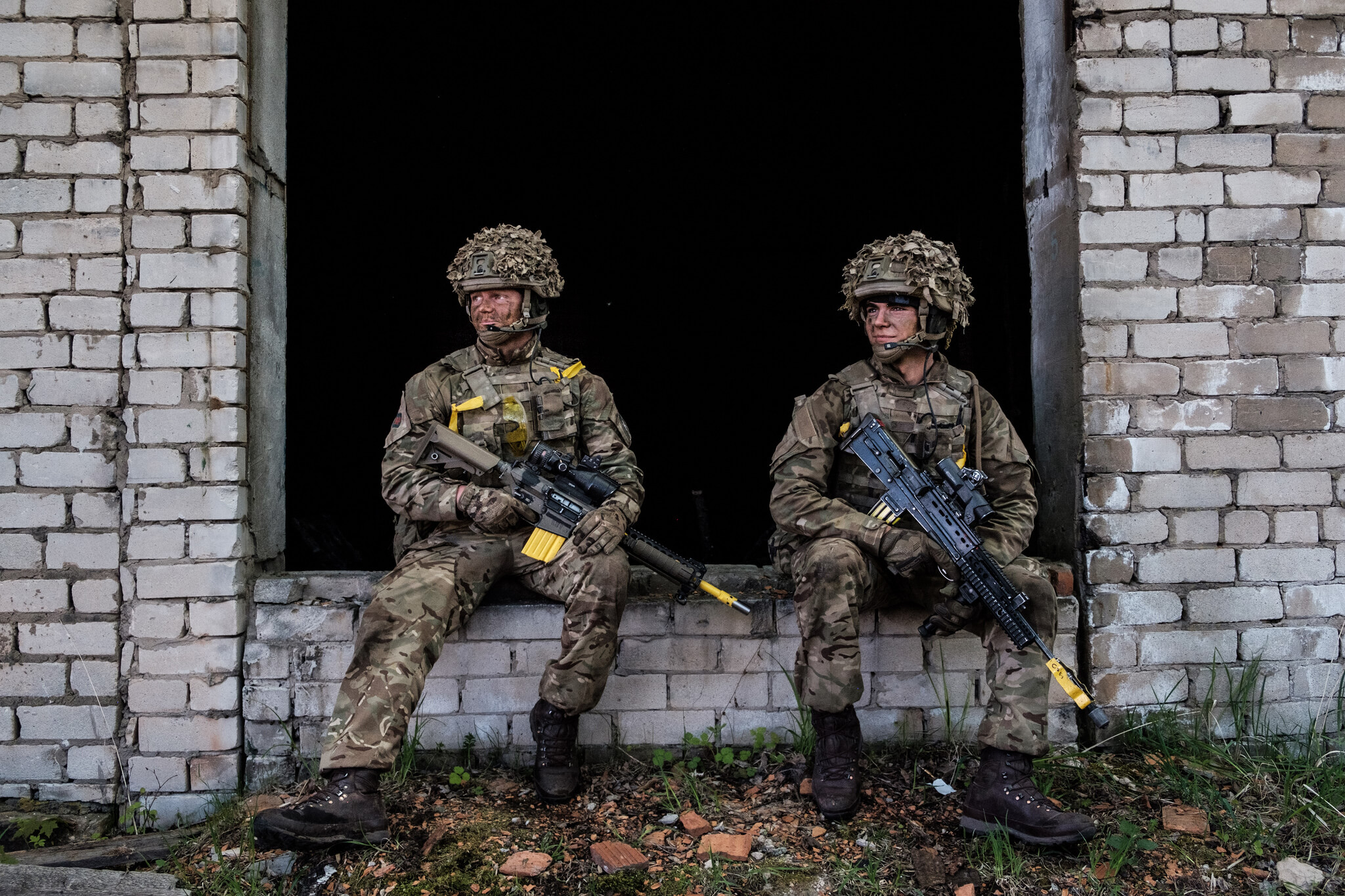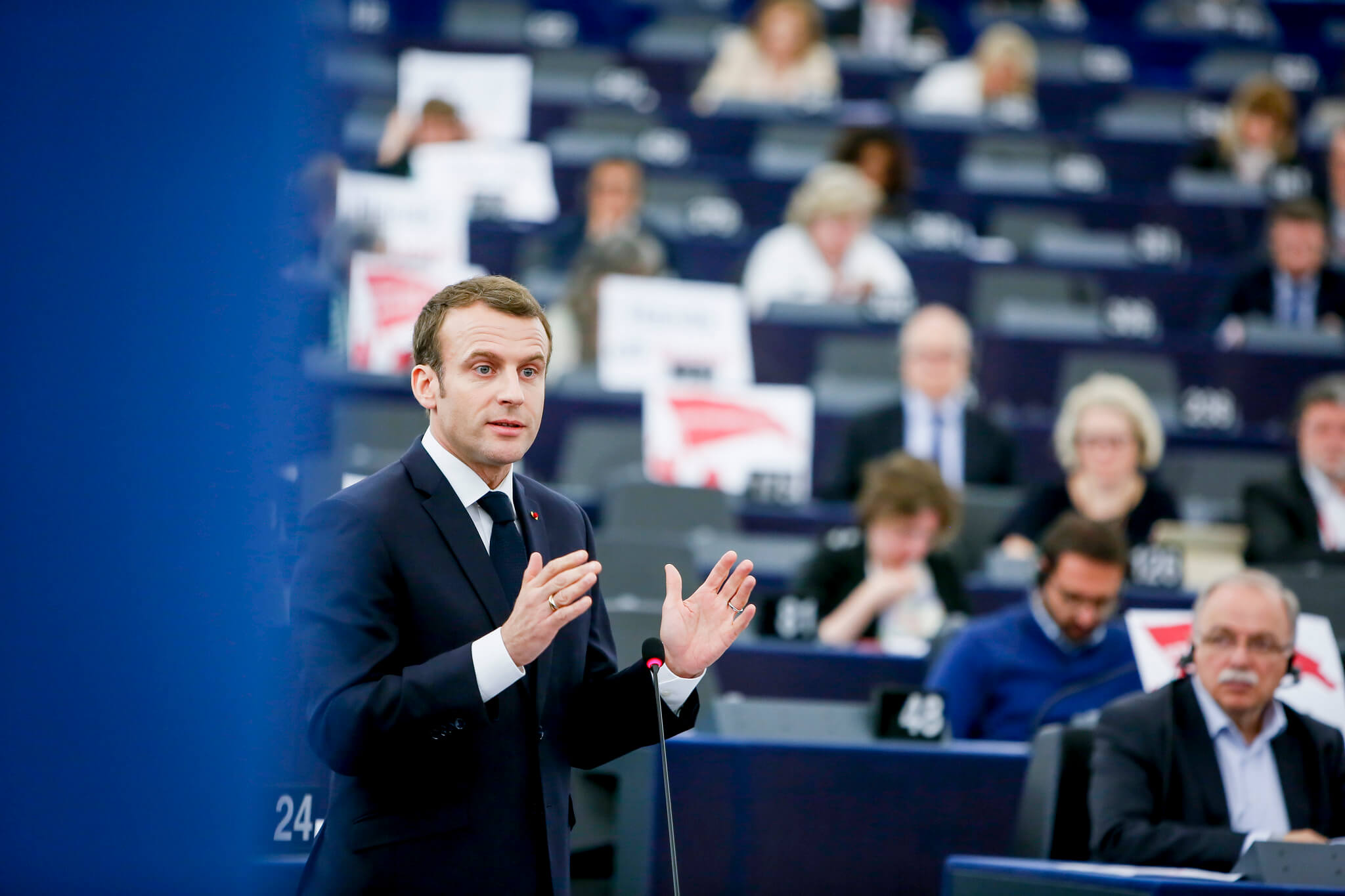
Dutch security and defence: from Atlantis to Europa?
Brexit and Trump are challenging the traditional approach of the Netherlands’ foreign policy: the dual-track of Atlantic and European cooperation. Is the Netherlands moving in the direction of a more European defence oriented approach?
On 4 April 1949 the Netherlands anchored its security and defence in the Trans-Atlantic Alliance by signing the NATO Treaty in Washington DC. Since then successive Dutch governments, including the current Rutte-3 coalition, have labelled NATO as the cornerstone of the country’s security. Recent calls for a European Army ring alarm bells in The Hague.
The main argument for the Dutch government’s opposition is that Europe cannot ensure its own security without the involvement of the United States. At the same time, the Netherlands is proactive in the efforts to strengthen European defence cooperation. The country participates in Permanent Structured Cooperation and in other defence initiatives recently launched in the European Union. The Netherlands belongs to the small group of European countries implementing President Macron’s European Intervention Initiative. Is Dutch Atlanticsm shifting in the direction of European defence? If so, how far will it go and what sort of European cooperation is The Hague aiming for? And, what room is there for the Netherlands to make its own choice? Answering these questions may lead to a better insight into the Dutch positioning between Atlantis and Europa in the future.
The state of the Alliance
After two decades of out-of-area operations, from the Balkans to Afghanistan, NATO has returned to its original core task: deterrence and territorial defence. Since the Russian annexation of the Crimea and the start of Moscow’s interference in Eastern Ukraine in 2014, Article 5 has retaken its priority position in the Alliance’s list of main tasks.1
Russia’s assertive foreign policy, its military intervention in Syria, its chemical weapons attack on the Skripals in the United Kingdom, its intelligence service actions – in particular the intended cyber-attack on the OPCW2
in The Hague – have all underscored the need for a strong and credible Alliance, adapted to the security needs of the 21st century. So far, so good. Unfortunately, the resurgence of a strategic external threat has not resulted in a firmly united NATO. Three major internal issues are eroding the cohesion of the Trans-Atlantic Alliance as it is preparing itself for its 70th anniversary in April 2019: Trump, the East-South divide and Turkey (read Dick Zandee's article '70 years NATO: the alliance in troubled waters' to learn more about these issues)
Without a stepped-up European contribution, the future of a credible and effective Alliance is at stake
Allied declarations and statements express the principles of solidarity and mutual support, but in reality the Alliance has become a family characterized by mistrust and serious tensions among its members. NATO has gone through several internal crises in its long history, from Suez (1956) via the French withdrawal from the command structure (1966) to the cruise missiles debate in the 1980s. Today, it is facing several internal problems at the same time, while Russia is closely watching the weakening of the Trans-Atlantic Alliance. Most likely, NATO will survive but the question is ‘what NATO?’. More European defence cooperation can certainly help to strengthen the Alliance, assuming it is carried out not in competition but in cooperation with NATO. To be more blunt: without a stepped-up European contribution, the future of a credible and effective Alliance is at stake.

European defence
The European Union has responded to the deteriorating security environment by launching a new Global Strategy and a series of defence initiatives. Among them Permanent Structured Cooperation (PESCO) and the European Defence Fund (EDF) are generally regarded as game changers. PESCO is (a) shifting the basis of EU defence cooperation from voluntarism to commitment and (b) moving forward the context for smaller groups of states taking projects of shared interest.
The EDF has brought the European Commission into defence cooperation. While two pilot projects are already up and running with a total amount of € 590 million, the Commission intends to spend € 13 billion on defence research and industrial development in the timeframe 2021-2027. Member states and large defence industrial firms have acknowledged the potential of the EDF. It might become an important driver for European collaboration and breaking national chains of demand and production of defence equipment. The Commission is quite clear that the EDF serves two goals: (i) stimulating military capability improvement through collaborative investment and (ii) strengthening the European Defence Technological and Industrial Base (EDTIB).3 The EDF will stimulate European defence equipment procurement, assuming that the Fund generates significant results in the coming years. Although nothing will prevent member states from buying from suppliers outside Europe, the collaborative procurement of military equipment of European origin is gaining more political and financial impetus.
The focus is on conventional weapons, but soon the modernisation of nuclear weapons will have to be part of the equation unless arms control negotiations enter a new life
In that sense the EU-NATO cooperation is also quickly changing. In the past, both organizations had to ensure they were not duplicating military operations or arranging their complementarity – such as for the EU and NATO anti-piracy naval activities off the Somalia coast. From now on, the focus is more on capability development. Projects in the EU should also strengthen NATO and, thus, fulfil NATO requirements. For countries like the Netherlands, this is a key criterion for European defence cooperation projects. However, developing and procuring equipment in Europe has consequences for the Trans-Atlantic defence equipment trade relationship. The US will have to accept that a better burden-sharing on the input side may result in a more balanced procurement relationship on the output side, which is not per se favourable to US defence industries.

Choice or no choice?
The choice for any European country, including the Netherlands, is not between Atlantis or Europa. NATO can no longer function under American dominance as was the case in the past. The US itself calls for more European contributions because China and other rising powers will force Washington to dedicate more defence resources to its military efforts in other parts of the world. Despite the stepped-up efforts in recent years, Europe needs to do more to strengthen NATO’s deterrence and defence posture. The focus is on conventional weapons, but soon the modernisation of nuclear weapons will have to be part of the equation unless arms control negotiations enter a new life. At the moment, there is little or no sign pointing in that direction. The INF-Treaty, generally considered as the pearl in the nuclear arms control crown, will most likely end up in the waste bin in early February 2019 when the US formally withdraws its Treaty signature.
At the same time, there is no alternative in terms of a European Defence Union or a European Army. Both are illusions, at least when defined in terms of a single European defence budget, one command chain and one organisation. Only staunch federalists still believe in such a model and their numbers are rapidly diminishing. Also from a military-technical perspective a pan-European army, comparable to the US armed forces, is out of reach. Different languages, strategic interests and organisational cultures form insurmountable obstacles.
Most probably, President Macron is not envisaging such a force when making his plea for a European Army. What he really is envisaging is deeper defence cooperation between the like-minded in Europe, for which he has launched his European Intervention Initiative. Yes, he is talking about strategic autonomy – meaning Europe (or better: a core of European countries) being ultimately able to take care of their own defence. However, that European potential, if it is ever realised, is also available to NATO and will thus help to balance the Trans-Atlantic burden. As for Germany, it remains totally unclear what Chancellor Merkel means when she refers to a European Army. There is no strategic concept behind the call and it seems to serve primarily the traditional German agenda of embedding the Bundeswehr in multinational structures, next to NATO in a European framework. In the interest of constructing Europe instead of breaking it up, it would be better if Macron and Merkel would either stop calling for a European army or clearly define what they mean.

For the Dutch and for many other European countries a European Army is no alternative to NATO. European defence cooperation is aimed at strengthening military capabilities that are needed for Europe to take more responsibility for its own security. At the same time it has to contribute to a better burden-sharing in NATO. It is quite striking that the first PESCO flagship project is under Dutch leadership: Military Mobility. MM, as it is called in the defence acronym jargon, aims at improving arrangements, laws, regulations and infrastructure in order to speed up the movement of military equipment throughout Europe. It requires a tremendous amount of European decisions and actions, but it primarily serves NATO reinforcements for Article 5 contingencies. However, in other cases PESCO and EDF programmes are likely to cause tensions with the US when it comes to technology and industrial investment. Here, the pressure from the larger European countries to buy European will increase and the Commission’s rules of the EDF game are pointing in the same direction.
The EU military headquarters is becoming a reality step-by-step
The trends are in the direction of further increasing European defence cooperation. Here, the Dutch have no choice simply because the larger European countries set the course. The past has shown that opposition from The Hague turns into reluctant acceptance when the bigger European countries strike a deal. For example, the Netherlands strongly opposed a European military headquarters, but recently The Hague has accepted that the Military Planning and Conduct Capability in Brussels becomes an EU headquarters that is able to plan and conduct military operations for the employment of EU Battlegroups. If the EU steps up its military operations, predictably the next step will be to do the same for larger operations in a few years’ time. Thus, the EU military headquarters is becoming a reality step-by-step.
After Brexit, France and Germany will dominate the direction of European defence cooperation even more. Together, they will spend almost € 90 billion on defence in 2021 or about half of European defence expenditure after Brexit. The Dutch interests will be best served by closely teaming up with these two leading European powers and not by staying aside and rejecting immediately proposals for a European Army, even if they are vague and provocative. The Netherlands should use its balancing act between Atlantis and Europa to influence the course, direction and speed of European defence cooperation which is bound to grow in the future.
- 1NATO has three main tasks: territorial defence (Article 5); crisis management (Non-Article 5); cooperation and partnerships. Since the Wales Summit (September 2014) the Alliance’s efforts to strengthen its deterrence and defence posture have focussed on the Article 5 task.
- 2Organisation for the Prohibition of Chemical Weapons.
- 3EU Budget for the Future –The European Defence Fund, European Commission, 13 June 2018.







0 Comments
Add new comment